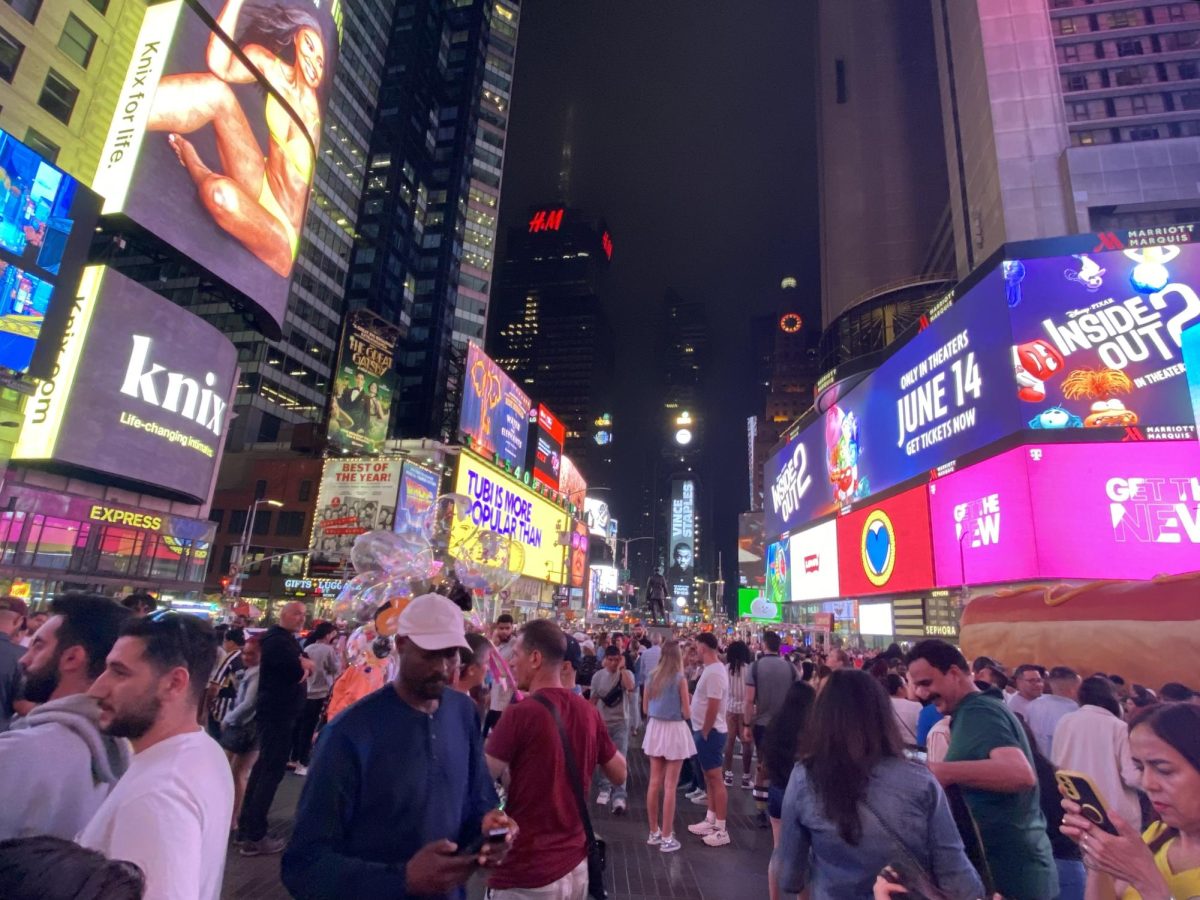“Start spreadin’ the news / I’m leaving today / I want to be a part of it / New York, New York!… / I want to wake up / In a city that doesn’t sleep. / And find I’m king of the hill / Top of the heap!”
These are the famous lyrics of the iconic song ‘New York, New York,’ written by John Kander and Fred Ebb. While this bustling image of New York City has been prevalent since the early 1900s, this song helped to popularize this idea, and popular media today reflects this image of New York City.
This nickname used to be true. Prior to the Coronavirus pandemic, it was common to see the streets of New York, especially in Manhattan, filled with tourists and workers.
Many businesses were open 24/7, such as diners, bars, gyms, bodegas, pharmacies, and restaurants. McDonald’s, for example, used to be open either 24 hours or would close very late in the morning. Planet Fitness had several 24 hour locations, granting gym access to anyone around the city. The subways and buses, which operate all the time, would be packed with straphangers trying to reach their destinations. Many of these people were tourists going to Times Square to spend the night.
Along the streets of New York City, bars and restaurants would be playing music or playing a sports game on T.V. while friends, families, and couples would huddle together and enjoy the night.
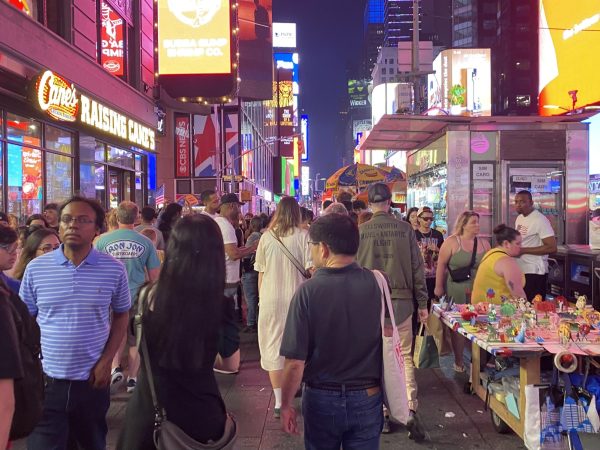
Britt and Mattias, two longtime Manhattan residents, provided their insight and experiences to me regarding New York City nightlife. “I used to go out pre-COVID in college. Usually I had to take public transit. I had a lot of fun,” said Britt.
“Usually, I went to live music venues or bar hopping in the LES [Lower East Side], EV [East Village], Greenpoint, or Williamsburg,” said Mattias. “I usually took the train to and fro, unless it was past 2 A.M.”
However, on March 23rd, 2020, when the COVID-19 pandemic ravaged the world, then New York governor Andrew Cuomo announced a statewide stay at home order which ordered 8.8 million New York City residents (and over 19 million New York State residents) to stay at home and avoid unnecessary travel. This effectively shut down many common nightlife activities, such as watching movies in movie theaters, indefinitely. Cuomo also announced subway closures from 1 A.M. to 5 A.M. every night to thoroughly disinfect trains and stations.
This shutdown lasted months, and while restrictions began to be lifted during the summer of 2020, a resurgence of the virus resulted in more shutdowns the following winter. It was not until the summer of 2021 that the majority of all COVID-19 restrictions were ended. These shutdowns, while necessary to combat the spread of COVID-19, also had a colossal effect on many of New York City’s small businesses, many of whom relied on tourism and nightlife to survive.
New York City is very expensive to start a business in, making small businesses even more vulnerable to shutting down. The city also has immense business competition, causing businesses to better appeal to customers. As a result, many small businesses often end up closing after a few years, and the ones that survive for a longer period of time rely on social media advertising and tourists, especially during the nighttime.
During the pandemic, New York City experienced a rapid drop in the number of tourists. In 2020, just 22.3 million tourists visited the Big Apple, which is about one third of its 2019 numbers (66.6 million visitors). This resulted in a record drop in city revenue, as it raked in only $20.2 billion dollars in tourism revenue in 2020 compared to $80.3 billion in 2019 (a 75 percent drop). This, combined with the permanent shutdown of many other businesses, prompted concerns over whether the city could fully recover in the post pandemic era.
However, the city showed immense resilience in the following years, as it welcomed 32.9 million tourists in 2021, which then grew to 56.7 million visitors in 2022 to 62.2 million visitors in 2023. Statistically, if current trends continue, the metropolis is expected to approach its 2019 tourism numbers this year with a projected 64.5 million visitors.
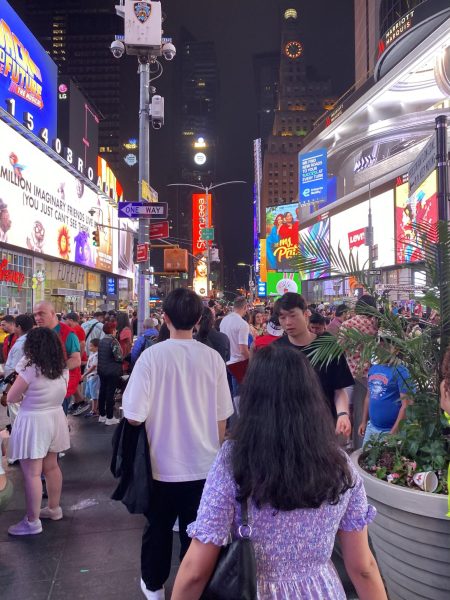
While the city has enjoyed a strong post-COVID-19 recovery, the tourism industry has experienced negative changes such as fewer places being open late at night. Many retailers, gyms, pharmacies (especially CVS), grocery stores, diners, and eateries that used to be open late nights have begun to close their doors early. Iconic restaurants, such as Dim Sum Palace in Chinatown, L’Express French Bistro in downtown Manhattan, Wo-Hop in Chinatown, Veselka in the East Village, Royal Grill Halal Food near Times Square, and many more have begun closing their doors as early as 10 P.M., when previously they used to be open as late as 4 A.M.
Why are businesses closing earlier? According to many business owners, city crime is the main concern. In 2020, the number of crimes committed by firearm use shot up 49.6% compared to its 2019 numbers. Even before 2020, violent crime in the city had been slowly ticking up, with a 19.5% increase in crimes involving firearms between 2016 (when crime reached historic lows in the city) and 2020.
Property crime has also risen during the pandemic, growing about 1.9% from 2019 to 2020. Burglaries in particular shot up, with there being 41.6% more reported cases in New York City in 2020 compared to 2019. Many businesses have also experienced a surge in shoplifting (64% higher in June 2023 compared to June 2019), with organized groups plotting and stealing over $4.4 billion in goods from businesses. New York Police Department (NYPD) response to these incidents have also been slow, and district attorneys have been slow to prosecute shoplifters, leading to many employees being unable to properly combat the issue.
While Mayor Eric Adams and Governor Kathy Hochul have touted decreasing crime numbers in New York City from their peaks in 2022, overall crime is still approximately 33.7% higher now compared to in 2019. Even though New York is still one of the safest big cities in the country, the rise in crime has put city businesses at unease.
Crime is not the only reason behind this trend. In 2020, amidst the pandemic, there were nationwide protests against police brutality after George Floyd was murdered by then police officer Derek Chauvin. Earlier in the year, Breonna Taylor was also murdered after police officers in Louisville, Kentucky forced entry into her apartment in the middle of the night to investigate alleged drug dealing operations. These killings led to protests occurring in almost every city in the country, especially in New York. While the majority of the protests were peaceful, a handful of them turned violent, and businesses were shoplifted and burned during these demonstrations.
To combat the violence, then Mayor Bill de Blasio issued an emergency executive order establishing a curfew at 8 P.M. All nonessential travel was banned between the hours of 8 P.M. and 5 A.M. and nonessential businesses began closing their doors earlier as a result. It is likely that many of these businesses decided against extending their hours once curfew was lifted. This may be due to the difficulty of finding workers or as an attempt to minimize costs.
Another factor cited by business owners is the lack of staff available to work late nights. Following the pandemic, there has been a major labor shortage all throughout the United States. It is already very difficult to find employees to work during the daytime, and given the elevated crime rates, very few workers are willing to work overnight at current pay. Instead of incentivizing employees to work overnight, many businesses are deciding to cut late-night hours altogether.
It should be noted that the decline in 24-hour businesses is not limited to New York City and that this has become a national — even worldwide — phenomenon. Walmart, for example, discontinued its 24-hour operations once COVID-19 hit, and they have announced that they have no plans to reinstate it anytime soon. Walmart executives have also mentioned similar reasons for the reduction of open hours, citing concerns about crime, availability of employees, and reduced traffic overnight. Other cities known for their nightlife, such as Los Angeles and Miami, have also seen businesses closing early and streets becoming emptier at night.
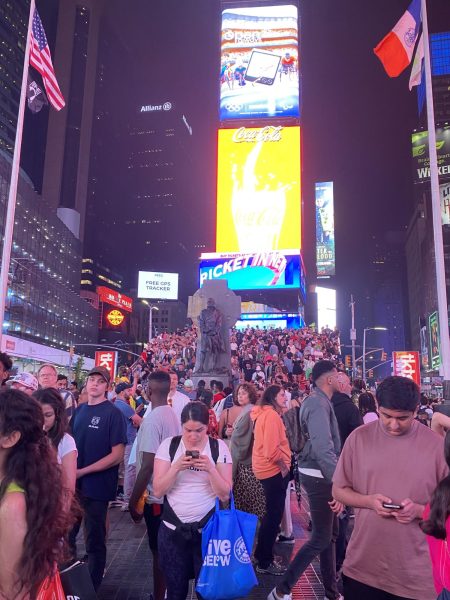
However, despite the reduction in nightlife in the Big Apple, the nightlife industry is showing signs of recovery. The major rebound of tourists visiting the city has started fueling the demand for late night businesses. Many businesses continue to be open well into the overnight hours, mainly in the touristy areas of the city. The Metropolitan Transportation Authority (MTA) has announced that they have no plans to end 24-hour service anytime soon, alleviating concerns that the pandemic era service cuts would become permanent, thereby allowing late night stragglers to have reliable subway and bus services.
Crime rates are trending downward, reducing fears about public safety. Unemployment rates have been trending steadily down from their highs in 2020, now sitting at 4.8%. Meanwhile, labor force participation rate reached a 10 year high in New York state, at 61.5%, meaning that a larger portion of New Yorkers are working now than any time in the last 10 years. This rise in labor force participation will help to alleviate the staffing shortage hurting the city, allowing businesses to operate late at night.
Technological advancements have caused businesses to operate more efficiently; these advancements have also reduced their reliance on employees, allowing them to operate at more flexible hours. Productivity rates are soaring in the U.S., up 4.7% in Quarter 3 (Q3) of 2023, an incredible rebound from a downward spike of 6.3% in Q1 of 2022. And despite fears of recession, the U.S. economy has continued to grow at impressive rates, with real GDP (gross domestic product) up an adjusted 2.5% in 2023 (an increase from a 1.9% growth rate in 2022), an indication that Americans are spending more, including on nonessential items and travel, adjusted for inflation.
New York City in particular, saw a GDP growth rate of 2.3% in 2022 and slightly under 2% growth in 2023 (now at $1.05 trillion compared to $1.02 trillion in 2019). While the nightlife and tourism industry took a nosedive in 2020 during the height of the COVID-19 pandemic, the rebound of tourists, employment, and economic growth paint an optimistic picture for the future of nightlife in the metropolis.
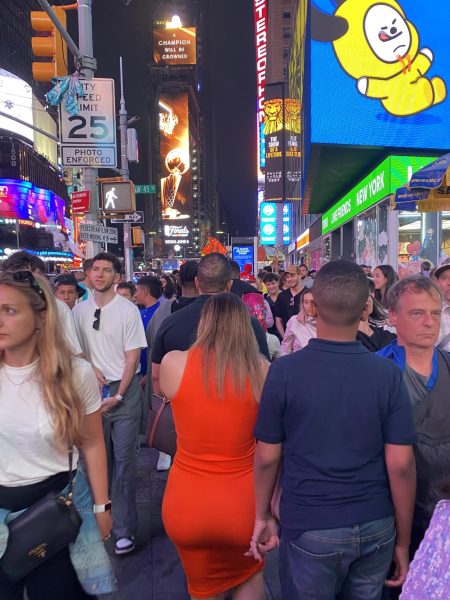
However, not all New Yorkers agree. When asked about whether they agree or disagree with New York being known as the “city that never sleeps,” Britt agrees, saying,“It certainly sleeps more than it used to, but have you been to most other cities at 2 A.M.? Similar if not worse.”
Mattias, however, disagrees, saying, “It feels like many places (cafes, diners, pharmacies, bodegas) are not open 24/7.”
Were John Kander and Fred Ebb correct in their assessment of New York City being known as the “city that never sleeps?” It all depends on who you ask. Perhaps the city is indeed permanently shutting their lights down. Only time will tell.
Along the streets of New York, bars and restaurants would be playing music or playing a sports game on TV while friends, families, and couples would huddle together and enjoy the night.

